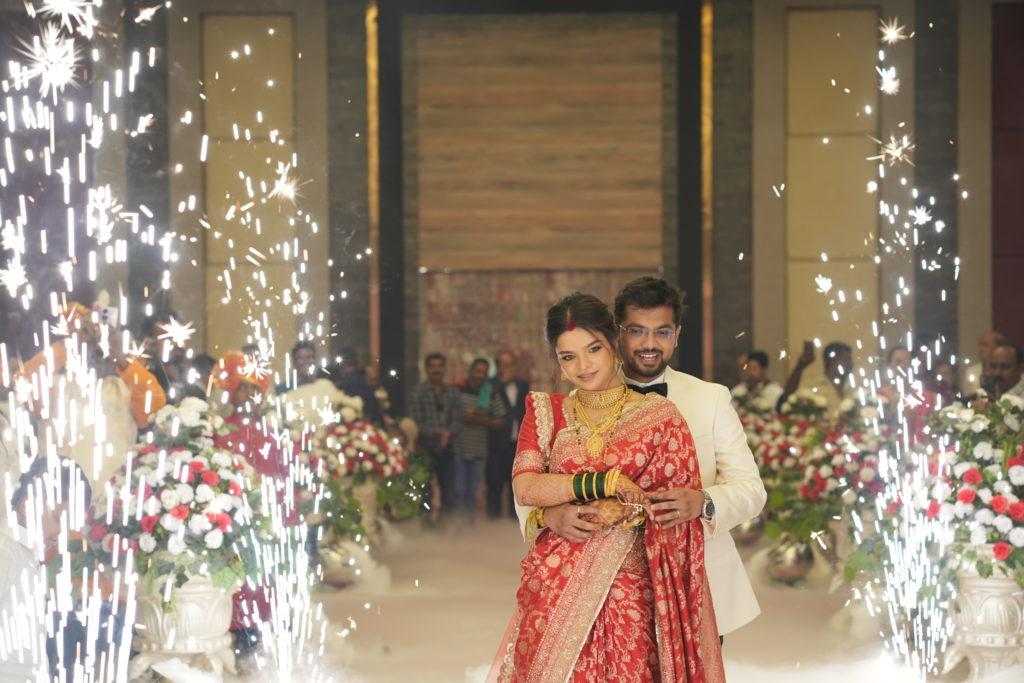Hindu weddings are renowned for their rich customs, deep-rooted traditions, and vibrant nature. Recently, I had the privilege of attending my cousin’s wedding. While the wedding itself was grand, the post-wedding events were equally as intricate and beautiful, offering a unique insight into Maharashtrian traditions within my own family.
The reception began immediately after the main wedding ceremony, marked by the breathtaking entry of the bride and groom. Clad in a tuxedo, my cousin, the groom, escorted his bride, resplendent in a radiant red sari, a scene reminiscent of a fairy tale took place. As they danced romantically to the music, enveloped in the ethereal mist of dry ice, the crowd of 800 guests erupted in audible gasps and awe.
Following the entrance, the groom recited his own poetry, a surprise he had been working on all week. After ear-bursting whistles and claps from the audience, the couple began the customary task of taking pictures with their numerous guests, a process that lasted several hours due to the sheer size of the gathering. As the night progressed and most guests departed, about 20 close family members gathered for dinner. Anticipation peaked as the traditional moment of the bride and groom feeding each other for the first time approached. However, due to the day’s exhaustion and the diets they had both observed for months, the couple had forgotten about the tradition, opting instead to hastily consume their meal. A chorus of laughter swept across the table as the groom’s sister playfully reminded him of the custom, prompting the couple to lovingly feed each other amid adoring gazes.
Later that night, a smaller group of us embarked on a three-hour journey to the groom’s and consequently also my ancestral village, where a small musical ensemble awaited our arrival. Accompanied by lively music, we danced our way to a village temple, a customary practice to seek blessings from the groom’s ancestral deities. Following this ritual, we proceeded to my family’s home, adorned with twinkling lights that illuminated the night, embodying the spirit of a traditional Hindu wedding.
The night was far from over as we commenced the ritual of welcoming the bride into her new home, a tradition in which she was symbolized as the embodiment of the Hindu goddess Lakshmi. The ritual began with the bride tipping over a pot of rice at the doorway, signifying the good fortune she would bring to the home. The bride dipped both her feet in a bronze plate of deep red vermilion water and took her first steps into her groom’s house. The red footprints left behind symbolize the blessed arrival of a goddess into our house. The evening culminated in competitive games between the couple and laughter, reinforcing familial bonds and easing the bride’s transition into our family.
The following day was equally busy, with the couple and their cousins visiting various temples to seek blessings for the new union. Meanwhile, preparations were underway for the second reception, attended by around 300 guests from the village. The evening was filled with blessings, gifts, and heartfelt moments, including a moving ballad the groom performed for his mother, one that brought gushing tears to everyone’s eyes. As the festivities drew to a close, emotions ran high as the bride bid farewell to her family, marking the end of a joyous celebration of love and tradition.
